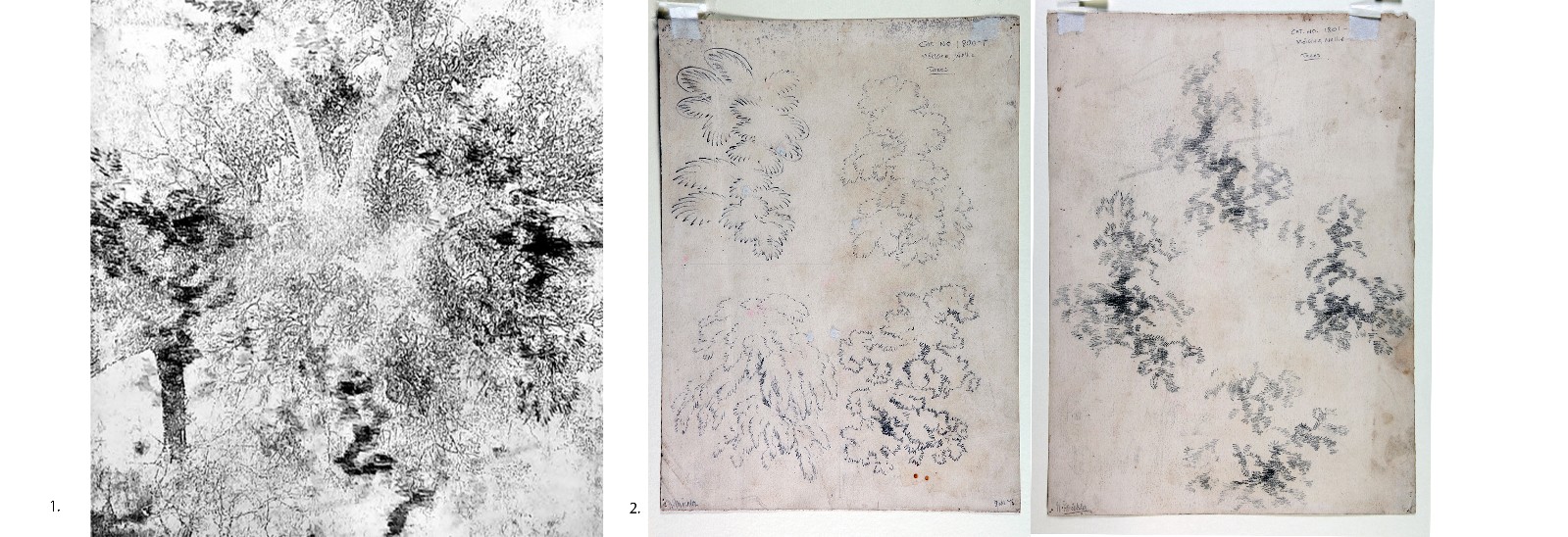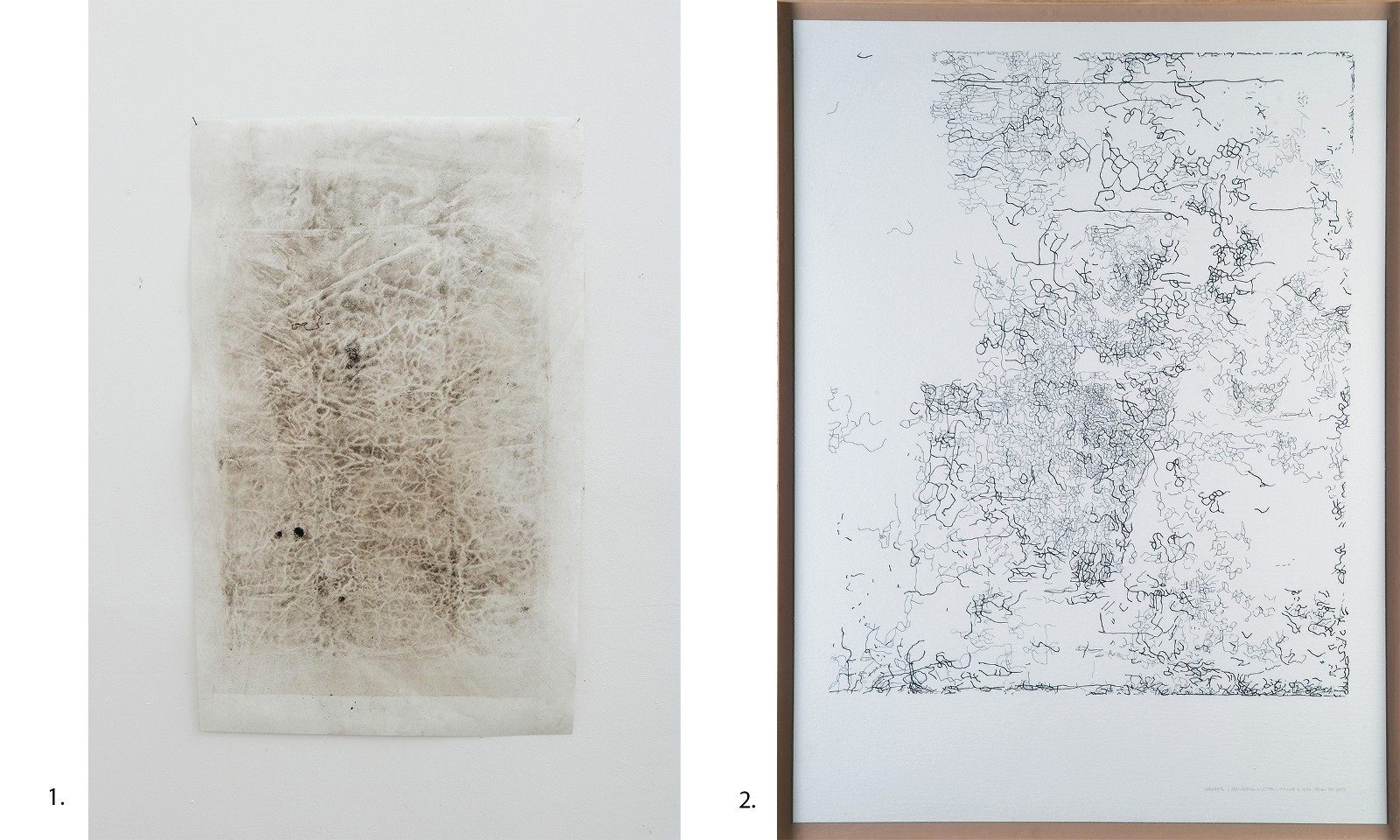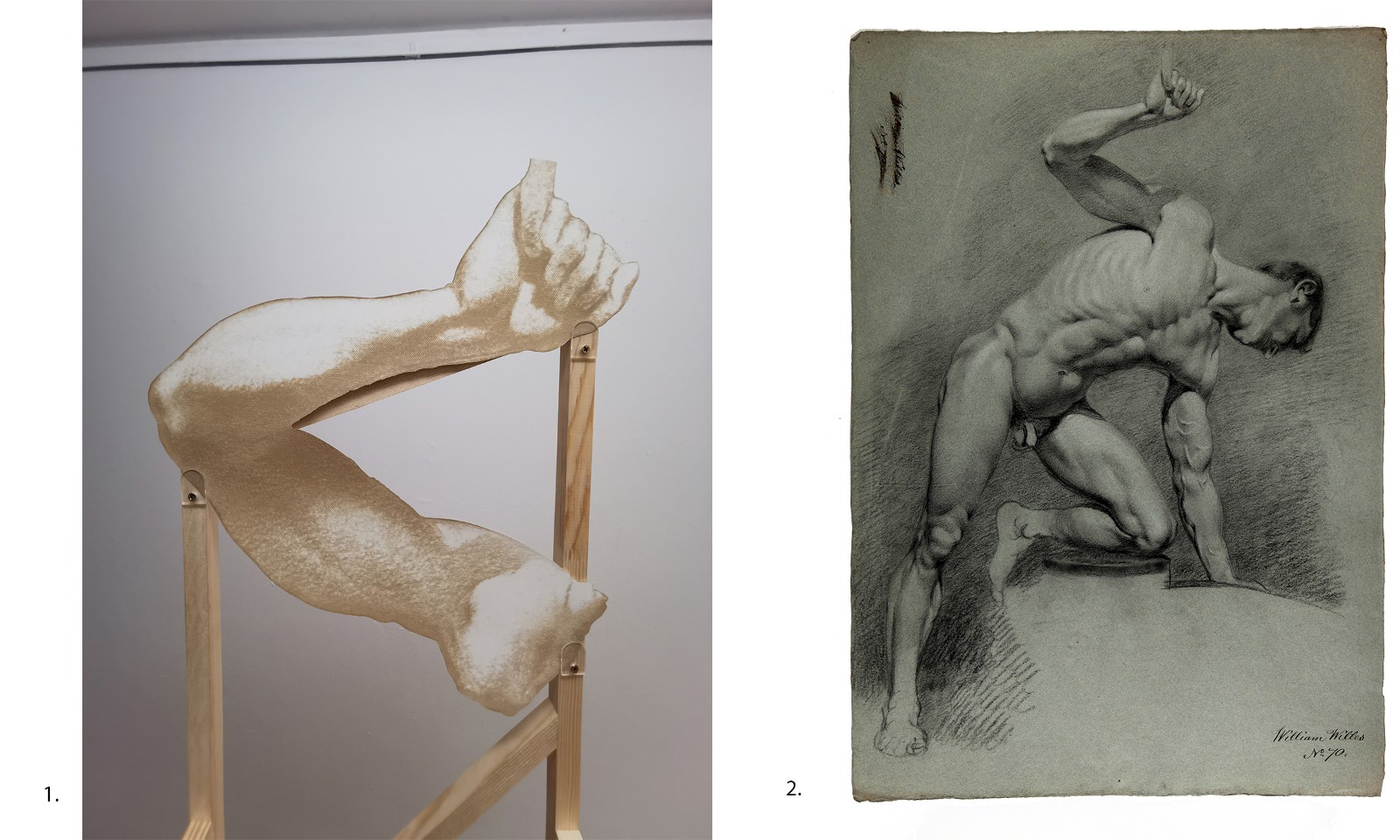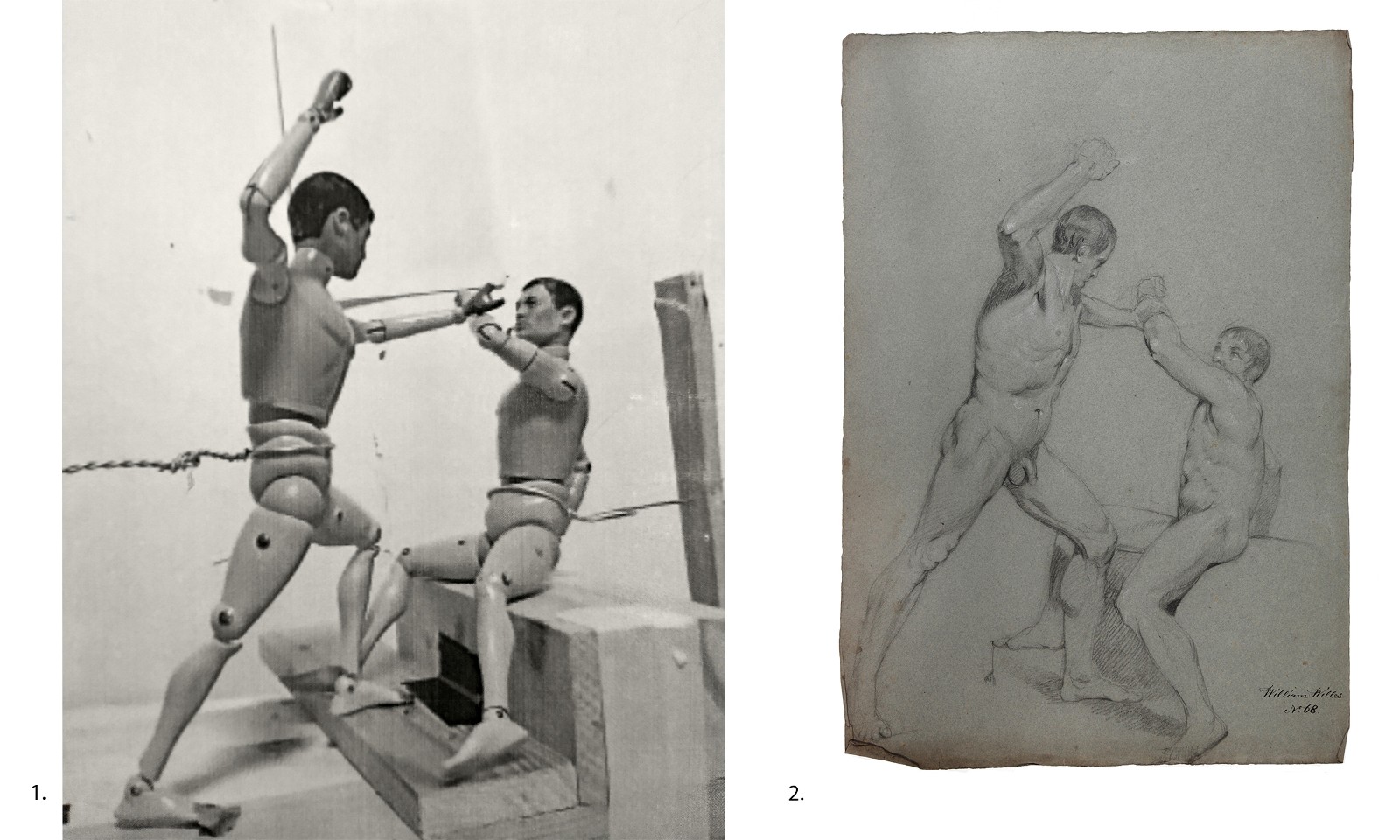Drawing Connections
Sample-Studios in collaboration with CCAD Drawbridge at MTU
Where: Sample-Studios Gallery, The Lord Mayor’s Pavilion, Fitzgerald’s Park
When: 6th October (Opening 4pm-6pm) - 3rd November 2022
Open daily Tues - Sun 11pm-5pm
Drawbridge and Sample-Studios are collaborating on Drawing Connections - an exhibition and research project which explores drawing practice, experimental approaches, and begins by responding to drawings held within the Crawford Art Gallery drawing collection.
The 10 artists involved are MTU MA:AP Graduates, whose work delves into the expanded field of drawing practice as, for example: embodied act or performance, as site specific response or narrative, as a method of capturing and exploring interactive collaborations, etc.
Dr.Michael Waldron from the Crawford Art Gallery will be our guest speaker on the opening evening. The Crawford Art Gallery are currently exhibiting Drawing Room (9th September – 4th December 2022) a show which celebrates contemporary and historic drawing practice which Drawing Connections is delighted to be coinciding with.
To learn more about our MTU MA Art & Process course please email: https://lucy.dawe-lane@mtu.ie or visit the upcoming Open Day news/ma--art-and-process-open-day--friday-7th-october-2022/
Lets meet the artists involved in Drawing Connections and the drawings from the Crawford Art Gallery from which their work was inspired:
Aoife Claffey
Instagram: https://www.instagram.com/aoifeclaffeyart

Image 1. Aoife Claffey, Research Detail for finished piece Knot
Image 2: Kim Jones, War Drawing, 2000-2002. Collection Crawford Art Gallery © Kim Jones
Bio:
Aoife Claffey is a installation artist, living and working in Cork. Her work explores human sensory perception in provisional spaces and creates installations combining projection film, printmaking, found objects and sound. Physiological and psychological tensions between chaos and order are encouraged both during the making, and within the work, to evoke immersive uncanny effects or altered cognitive states.
She received First Class Honours in both her MA in Art and Process in 2020 and BA in Fine Art in 2019 from CIT Crawford College of Art and Design. Arising from her Degree Show, she was awarded six awards and three residencies, leading to a number of exhibitions and opportunities, including the Sample-Studios Graduate Studio Residency. She is a member of both Sample Studios and Cork Printmakers.
"I explore human sensory perception in immersive environments. It is influenced by my interest in human behaviour and the physical exploration of site specific provisional spaces. I create installations by combining mediums such as, interactive projections, reflective found objects, lighting, printmaking with surround sound. My installations encompass notions of unpredictability, fragility and movement.
My installations are controlled by the viewers participation with the artwork. Shadows may alternate in intensity and scale passing throughout a collaboration adapting and giving awareness of how one can affect an environment. These shadows create marks and drawings in the surrounding space. Reflective and translucent objects shift, and transparent layers of imagery and sound transform unexpectedly each time the work is experienced.
During the process of making I often allow activity to go beyond my control. The work investigates subtly destabilising yet uncanny effects with constant fluctuations which can be engaged with both in a physical but psychological manner. A collective experience but experienced individually."
Drawing Connections:
"I selected Kim Jone’s War Drawing for many reasons. Firstly, I like the perspective. I often use my drone to get footage for my artwork and am intrigued at looking at this bird eye perspective. I also selected this drawing as I feel like my eye never rests on one particular place. It moves and its busy, which reminds me of a maze or labyrinth that you can’t escape. The detail and intricate pencil marks creates this quality that I think works really well. The erased parts in this piece are also just as interesting to me, imagining what was there before. This was my starting point with Drawbridge to create in response to the Drawing Collection at Crawford Art Gallery."
Cassandra Eustace
https://www.instagram.com/casseustace/

Image 1: Cassandra Eustace, Research Detail
Image 2: Nellie Möckler, Trees, 1877. Collection Crawford Art Gallery. Reproduced courtesy of Crawford Art Gallery
Bio:
Cassandra Eustace is a visual artist and educator, with a studio in the Backwater Artist Group, Cork. Using various sensory drawing processes she combines intuitive knowledge with the indeterminacy of mark making. When researching areas of interest such as mental health and wellbeing, biophilia, nondualism, posthumanism, this interrogative process-driven approach allows for an inventive response to topics that can’t always be located in the physical world. Drawing’s ability to discuss, think, emote, imagine, through all manner of media and processes, reflects in Cassandra’s work and why she loves to draw.
Drawing Connections:
My initial response to Nellie Möckler’s drawings was a recognition of nature studies diligently thought through and drawn by a woman. However, these drawings were 145 years old, with no provenance. Nellie was only visible in her drawings, leaving as every drawer does, her history, location, meaning, and beingness encoded subtly in her work.
Nellie was drawing in 1877 when women of means were socially managed. Termed ‘accomplished woman’ skilled in the arts, they were morally policed, commodified and obsessively scrutinized. As Ann Bermingham writes, there existed ‘… a masculinist norm and an essentialist construction of sexuality and subjectivity.’ This ongoing surveillance was also embedded in drawing instruction as the Drawing Masters supported ideals of the picturesque, requiring that she; ‘Nature’, must be controlled and reinvented when drawn. Nellies foliage drawings follow the formula of exercises prescribed by such Drawing Masters in their manuals.
Considering Nellie’s drawings and their likely origins encouraged me to respond using opposing processes of embodied sensory drawing and mixed media. I drew plein-air among trees, I drew my memory of sitting with trees, I followed her exercises and made up my own. Being a symbolic language of communication, my drawings gradually became letters I imagined sending back to Nellie, explaining what had happened.
"I was instantly attracted to Nellies Möckler’s work because of her expressive mark making sensitively drawn in 1877. At first glance I recognised how she had distilled her looking at trees and their jumble of leaves into shapes, because I have done this myself many times before when drawing outside. In my research I discovered they were indeed preliminary exercises for foliage. The drawing masters of the day took a very abstracted approach in teaching this skill by breaking down the complexity of leaf mass to shape, line, form, function and direction.
I could see Nellie thinking in her mark making. The line direction, the line weight, the thickness of line, these are all clues of how she was handling her tool, the surface, her drawing intention. I loved the confidence she showed in following these very abstract exercises back in 1877 and during my research came to reflect on these drawings as cultural portals, spanning 140 years and all the changes in drawing presentation, methodologies, ideologies. They also reminded me of what remains the same, because whatever else it is, drawing will always be a verb."
Catherine Callanan
Instagram: https://www.instagram.com/catherinecallananart/

Image 1. Catherine Callanan, Leave No Trace, Research for finished piece Following Fay, Senseless
Image 2. Brian Fay, Vermeer Lady Writing a Letter with Maid, 2007. Collection Crawford Art Gallery. Reproduced courtesy of the artist
Bio:
Born in West Cork, currently living in Co. Waterford
Working primarily through sculpture and installation, but also using drawing, video, and performance, Catherine Callanan’s work invites viewer engagement. Touch is pivotal. Her practice is influenced by Relational Aesthetics. The work is socio-political, exploring interpersonal relationships, the human psyche, and the ‘unseen’. Callanan strives to reflect and respond to the life-experiences of women she encounters.
An initial 20-year career in education, working with ‘at risk’ young people and their families took her to many countries. She also studied psychotherapy and was a foster carer for over 12 years. Callanan returned to college, to pursue her lifelong interest in art, by completing her BA in Contemporary Applied Art in 2018 and MA in Fine Art in 2019. Her thesis is published and was short listed for the Global Undergraduate Awards. Callanan was awarded Arts Council funding, residencies in IMMA, National Sculpture Factory, CIT M.A.A.P. and Crawford College of Art and Design Glass Department. Along with several purchase prizes and exhibitions.
Her work is material based. Drawing on a rich store of historical and cultural symbolic associations; she explores through the complex and often unpredictable process of making and the purposeful inclusion of imperfections.
With thanks to Elaine O Neil for technical assistance on Drawing Connections work
Drawing Connections:
"Initially I was drawn to this visually as (a) I found the abstract nature of the subject matter intriguing and (b) I love how the line seemed to undulate across the image, telling a story in a text I wanted to decipher (c) the title led me to delve deeper and discover the connection to Vermeer."
Ciara Rodgers
Instagram: https://www.instagram.com/ciaraarodgers/

Image 1: Ciara Rodgers, An old fashioned drawing room mystery
Image 2: Suzy O’Mullane, Dial M for Milchofe , 1999. Collection Crawford Art Gallery © Suzy O’Mullane
Bio:
Ciara Rodgers uses a variety of media including drawing, performance and photography in response to place. Her practice has a primary drawing basis, and she is currently exploring what could be described as an embodied form of drawing, examining the direct and indirect effect of the built environment on senses, mood, emotions, and motivations.
Ciara is a studio holder at Backwater Artists Group and a member of Cork Printmakers. She was awarded a Bursary (2020) and an Agility Award (2021) from the Arts Council of Ireland, and she has a BA and MA in Art from MTU Crawford College of Art and Design.
Drawing Connections:
An old-fashioned Drawing Room Mystery
For Drawing Connections, I chose Dial M for Milchofe, 1999, Suzy 0’ Mullane (1958) to artistically respond to from The Crawford Art Gallery’s drawing collection. O’ Mullane uses encoded imagery evolved over time to form suggestive references and personal symbolism. Commonalities in our respective practices include working in charcoal over a larger scale.
I attempted to decode O’ Mullane’s mysterious drawing, and in response, created my own symbolism through performative drawing actions whilst utilising props and themes from Alfred Hitchcocks 1958 feature film Dial M for Murder. Throughout the duration of the drawing, the action is also constrained to one room, toying with depth and space and playing off both the audience and character’s vantage points.
My filmed performance takes drawn rotations inspired by the dialling movement of a rotary phone to create a coded language. I play out two versions of myself; the ID, the primitive and instinctual part of the unconscious which contains all my urges and impulses whilst the Ego considers social realities and norms, etiquette, and rules in deciding how to behave, a “violent relaxation”. Both characters, taken from Freud's theories around the human psyche take different approaches to carrying out M.U.R.D.E.R. through drawing actions.
"O’ Mullane uses encoded imagery evolved over time to form suggestive references and personal symbolism. Commonalities in our respective practices include working in charcoal over a larger scale. I attempted to decode O’ Mullane’s mysterious drawing, Dial M for Milchofe, in response, creating my own symbolism through performative drawing actions."
Ida Mitrani
Instagram: https://www.instagram.com/idamitrani/

Image 1: Ida Mitrani, Detail of Analgam of linear conceptions
Image 2: Thomas Rowlandson, Woods Near Albury and Tring, Herts, 1810. Collection Crawford Art Gallery. Reproduced courtesy of Crawford Art Gallery
Bio:
Ida Mitrani is a visual artist who works in a variety of media including drawing, collage, recycled and organic materials, and digital images. Her artistic concerns for the current ecological crisis are influenced through concepts and theories of plant culture, including plant blindness, post-naturalism, and hybridity. The diverse quality of the artworks combined with plant life forms highlights the contrast between the impermanent organic elements that transform and decay, and the more static inorganic matter that reflects humanity's legacy on earth. Her aim is to enhance our awareness of the loss of biodiversity and the over-use of synthetics by presenting a speculative vision of a world where various forms are intertwined suggesting the creation of new species.
Drawing Connections:
Mitrani’s site-specific mixed-media drawing and 3D installation is a response to the surroundings and architecture of the Lord Mayor's Pavilion, and to Woods Near Albury & Tring, Herts, 1810, by English artist and satirist Thomas Rowlandson. Rowlandson’s watercolour and ink drawing is an observational study illustrating a mixed woodland and parkland designed between the late 18th and early 19th centuries.
The positioning of Mitrani’s artwork allows the viewer to become part of a controlled landscape within the gallery context in which the various plants growing on Fitzgerald Park’s grounds are depicted in an unconventional way, pushing the boundaries of drawing.
The more traditional approach found in Rowlandson’ s watercolour and ink drawing - where the pale washes, the near perfect repetitive and vigorous curved lines suggesting the idealisation of an untamed landscape occupied by well arranged vegetation - is used as a starting point to construct the work and to create a continuity and connection between the various media and materials.
The layering and distortion of lines, forms, and colours through the continual process of repetitively printing, scanning, and manipulating digital images symbolises plant and human biorhythm, and the notion of reproduction through the use of technology.
The collage of the digitised images entangled with plant-shaped plastics evokes the notion of biological mimicry in which organisms simultaneously evolve to resemble and compete with one another.
While the work questions the relationship between humans and their ‘natural’ environment, and exposes our role in the current ecological crisis, by its placement it also encourages the viewer to stop, observe, and examine more closely.
"What mostly appeals to me in Rowladson's observational approach to landscape representation is the near perfect repetitive and vigorous curved lines suggesting the idealisation of an untamed landscape occupied by well-arranged vegetation.
The rhythmic lines are emphasised against the lightly applied pale washes, giving life to the work."
Jamie Ashforth
Instagram: https://www.instagram.com/jamie_ashforth/

Image 1: Jamie Ashforth, Understory (After Fay)
Image 2: Image 2. Brian Fay, Vermeer Lady Writing a Letter with Maid, 2007. Collection Crawford Art Gallery. Reproduced courtesy of the artist
Bio:
Jamie Ashforth is a Canadian visual artist researching the relationship between place and material, with a focus on vulnerability, precarity and experimentation. Her practice is largely process-led and material-responsive out of a quest for embodied experiences of discovery. Jamie is a current In House 2 artist-in-residence at The Guesthouse Project, and a member of Re:Group, an international collective recently exhibiting at the O’Driscoll building in West Cork. While in residence at Uillinn: West Cork Arts Centre this spring, she hosted Groundswell Again, a synchronized transatlantic event generating kinship across distance.
Drawing Connections:
Understory (After Fay), Debris Drawing - Mud on Paper, 2022
There is the work we intend to make, and the work that results. And a thick space between those two experiences. It is in this gap that materials often reveal an agency of their own.
While transcribing the markings left on fabric once buried underground, the weight of my body has imprinted itself. A thin coat of mud now clings delicately to paper, leaving an image on the brink of erasure. This roadmap of activity exposes histories that lurked beyond my sightline. By seeing beyond the image, a material language for entropy can now be found. In this intersection between drawing, printmaking, and performative acts of care, an architecture of transition remains.
Thank you to Brian Fay and Michael Waldron for rich conversations exploring Fay’s Vermeer Lady Writing a Letter (2007). It is with our discussions in mind that I’ve come to better understand how drawing may register history by mapping ephemeral processes materially.
"Brian Fay's Vermeer Lady Writing a Letter (2007) caught me by total surprise. This image has a textural quality that defies the materials used. There's an aliveness, a mapping, a world brought to life - yet retains its mystery."
Kate McElroy
Instagram: https://www.instagram.com/kate_mcelroy_/

Image 1: Kate McElroy, Milieu of Relations
Image 2: Kim Jones, War Drawing, 2000-2002. Collection Crawford Art Gallery © Kim Jones
Bio:
Kate McElroy is a multidisciplinary artist based in Cork City. She received a first class honours Master’s degree from Crawford College of Art and Design (2021). Kate recently completed a residency and exhibition at PADA, Lisbon July - August, 2022 and is supported by a Cork City Council Artist Bursary and Arts Council Agility Award.
Coalescing a sense of time and space Kate’s practice combines photography, found objects, recordings, performance and installation. Her work draws attention to an environment in constant flux, existing in a space between construction and destruction.
Drawing Connections:
On 11 May 2022 the artists and organizers met to explore selected drawings from the Crawford Art Gallery collection. Kate considers the spacetime experience of viewing the artworks in a relational setting, and explores a way to try and map the experiential milieu.
The term milieu can be described as the non-static middle ground which takes into account the intersections between environment, materialities and relations emerging within a dynamic virtual field.
The relational experience of viewing the work is explored in tandem with the varied histories and timescapes preserved in the drawings. Kate creates a layered map, crisscrossing aspects of the artworks with her own multiple exposure photographs. A soundscape is created from muffled conversations recorded on the day. The work examines the layering of fragmented, subjective experience and the comingling of place, time and relations.
Lynn-Marie Dennehy
Instagram: https://www.instagram.com/lynnmariedennehy/

Image 1: Lynn-Marie Dennehy, Detail of Fragments of a Male Nude with One Knee Kneeling on a Plinth
Image 2: William Willes (c.1775-1851) Male Nude with One Knee Kneeling on a Plinth. Collection Crawford Art Gallery. Reproduced courtesy of Crawford Art Gallery
Bio:
Lynn-Marie Dennehy is a visual artist, based in Cork City. She received an MA in Art and Process in 2018 and a BA in Fine Art in 2015 from CIT Crawford College of Art and Design. She is a full-time studio member of Backwater Artists Group and Cork Printmakers. She has exhibited both nationally and internationally and is supported by the Arts Council of Ireland. Her research-based practice employs sculpture, printmaking and video, with influences from philosophy, history and mythology. The work explores the place between culture, art and resistance, creating playful but pointed installations that explore the cultural influences and implications of a hegemonic society.
Drawing Connections:
Responding to William Willes (c.1775 - 1851), Male Nude with One Knee Kneeling on a Plinth, Dennehy’s work explores the space between reproduction, imitation and authenticity. Originally used as teaching aids these drawing would be copied by multiple students, multiple times, over many years. Ideas surrounding reproduction and restoration are common themes in Dennehy’s work and this response serves as a present-day copy that combines new technologies with handmade elements,
Through a process of digital manipulation, re-appropriation and reproduction, which the artist has dubbed ‘serendipitous digital drawing’, this work creates iconographically unstable images that can be assembled and recombined to yield fresh meanings and interpretations. Her material investigations feed into these ideas while also examining the implications of making art through automated means. She uses laser cutting technologies in ways that allow her to retain control of the mark making, layering and manipulating images and combining them with wooden supports and plinths to create a kind of sculptural extrapolation of space that brings the drawing back to its original context, a playful spatial assemblage that replicates the life drawing set up allowing the viewer to question assumptions of authenticity within the image itself and the perception of automated art production.
Peter Nash
Instagram: https://www.instagram.com/peter__nash/

Image 1: Peter Nash, Research Detail for finished piece Fight Final Copy2.mov
Image 2: William Willes (c.1775-1851) Two Male Nudes in Combat Pose. Collection Crawford Art Gallery. Reproduced courtesy of Crawford Art Gallery
Bio:
Peter Nash is a multi-disciplinary artist based in Cork. He obtained a BA Honours Degree in Fine Art from Sheffield Hallam University in 2003 and graduated in 2016 with an MA in Art & Process from Crawford College of Art and Design. Informed by an ongoing research into pre-internet sources of knowledge and methods of communication, Nash’s practice includes drawing, printmaking, animation and sculpture.
Drawing Connections:
The starting point for this work was Two Male Nudes in Combat Pose by William Willes. Willes’s drawing was studied and drawn out on paper numerous times, developed through a series of experiments with 1920s animation techniques, before being finally copied onto a tablet. No attempt has been made to correct, or to digitally smooth out the inconsistencies and mistakes of the original animated drawings. They have been reproduced in the digital format to serve as a reminder that in the creation of digital products, services and AI, there is always a human involved at some stage of the process, inputting data and inadvertently uploading their own prejudice, bias and error into the system.
Raphael Llewellyn
Instagram: https://www.instagram.com/raphaelllewellynart/

Image 1: Raphael Llewellyn, Research Detail
Image 2: Sarah Grace Carr, View of Kilmurry House at Kilworth, Co. Cork, 1819. Collection Crawford Art Gallery. Reproduced courtesy of Crawford Art Gallery
Bio:
A graduate of a Masters in Fine Art, ( Art & Process ) from CIT Crawford College of Art & Design, Cork. My practice is informed by the atavistic nature of place and is demonstrated through various mediums which include photography, painting and collage. An experimental process of observation and re presentation, it is a visual method of inquiry into place.
In this work the interplay between print and painting subverts expectations of the original through the odd intersection of both processes.
Raphael is a member of the Lavit Gallery Cork and a member of the Visual Artist Ireland, VAI
Drawing Connections:
Responding to the drawings of Sarah Grace Carr (1794-1837) in the Crawford Drawing Collection, from the classically inspired Georgian architecture of Kilmurry House Kilworth, to the bustling Port of Cork in October 1819. I was struck by the immediacy and personnel vision of the artists’ sketches. It was clear from the drawings that the artist was specific in her intention to record a particular place and time.
Considering that a drawing can at times be understood by its incompleteness then these drawings can also determine our perception of the present by their incompleteness.
My point of engagement then was to position myself in both locations in what I believed to be the artists’ viewpoint. Using the camera to capture the scene it is my intention to disrupt the expectation of the viewer choosing to blur the images so that the primary effect of the out of focus image becomes more generalized and almost generic. Specificity of time and place drops away and the image takes on a more abstract quality. The work becomes more about the process of making an image rather than capturing a particular place and time.